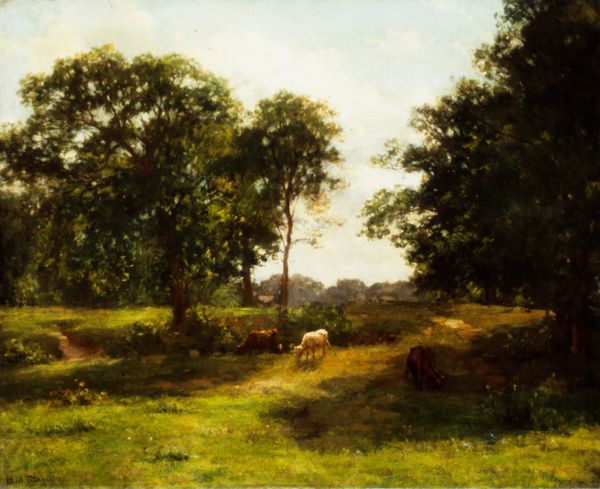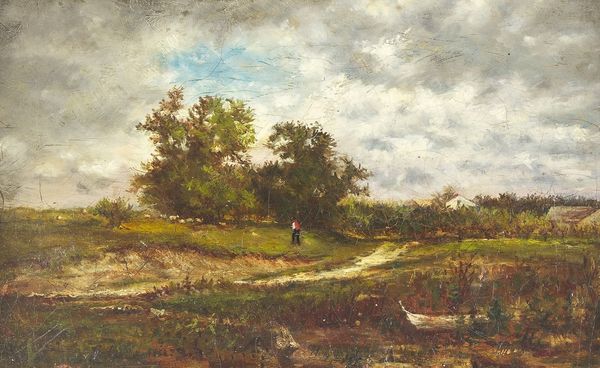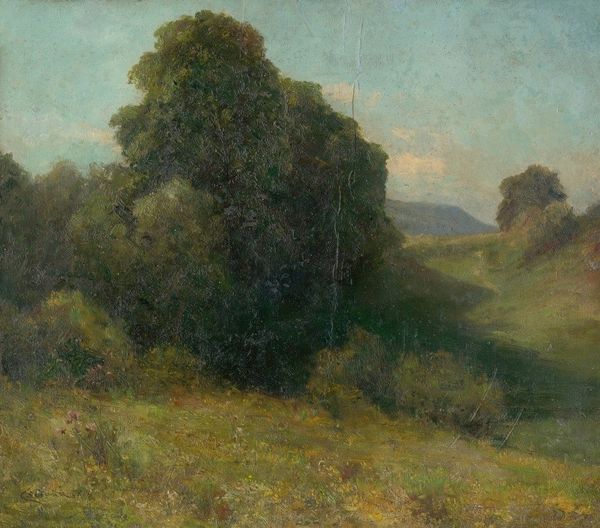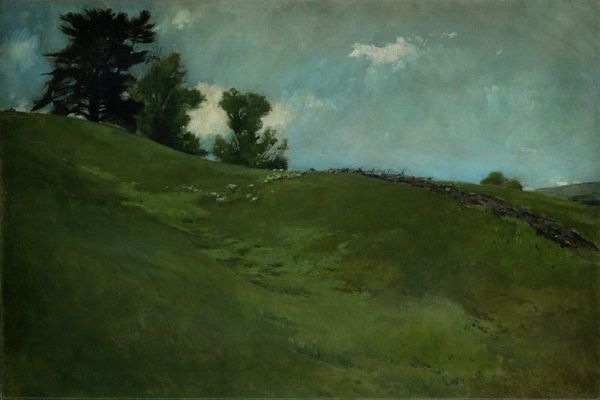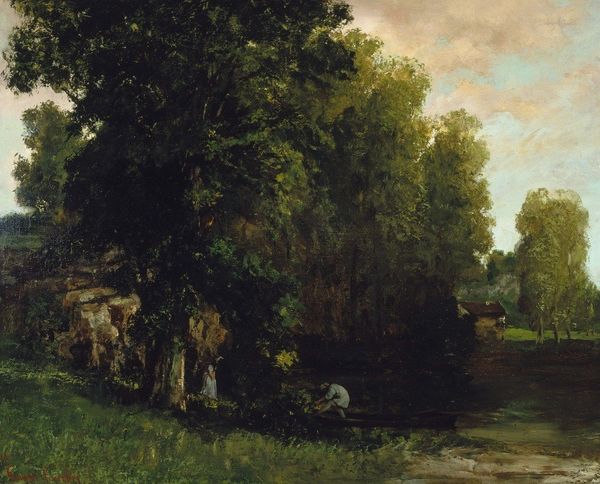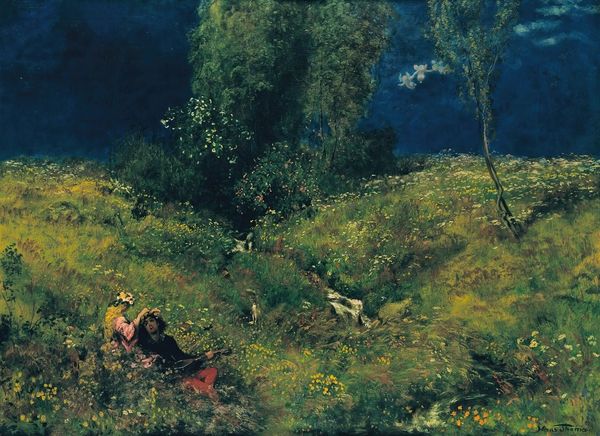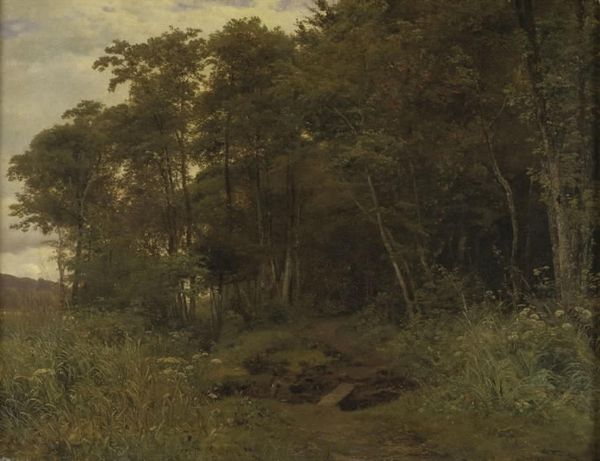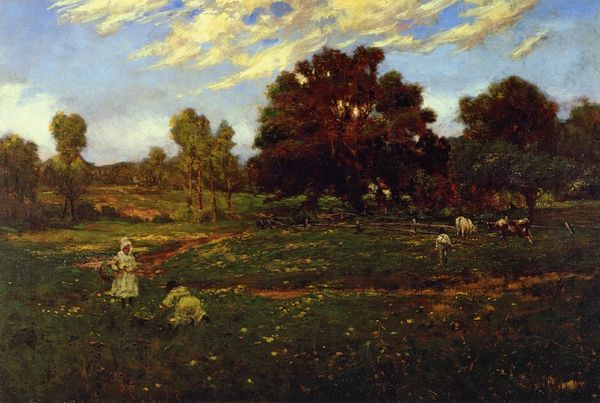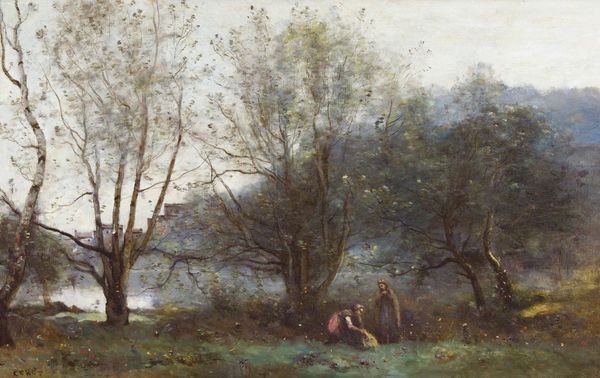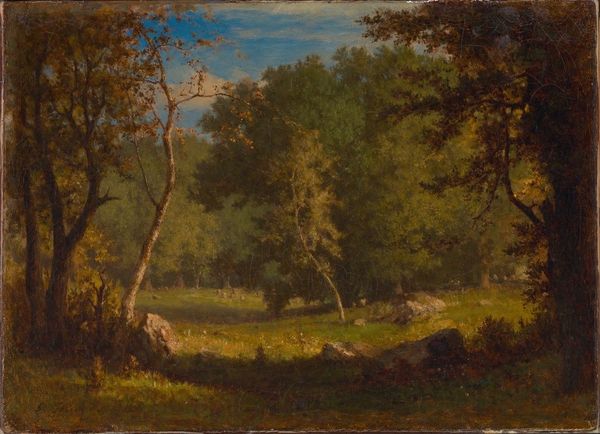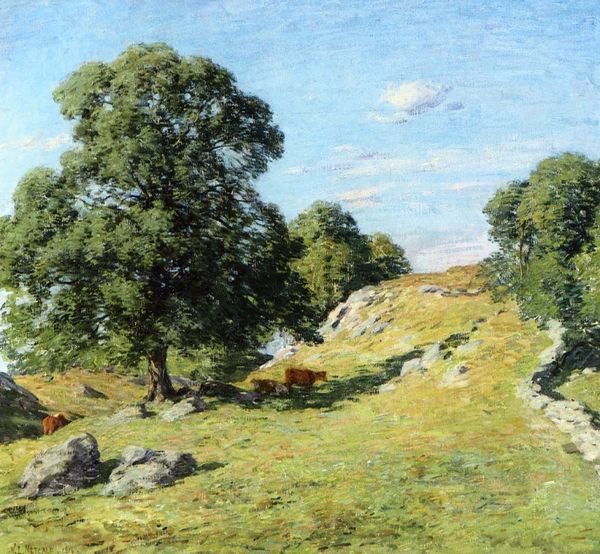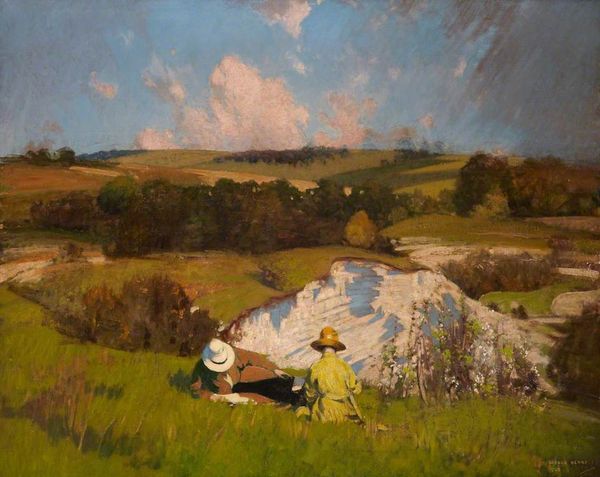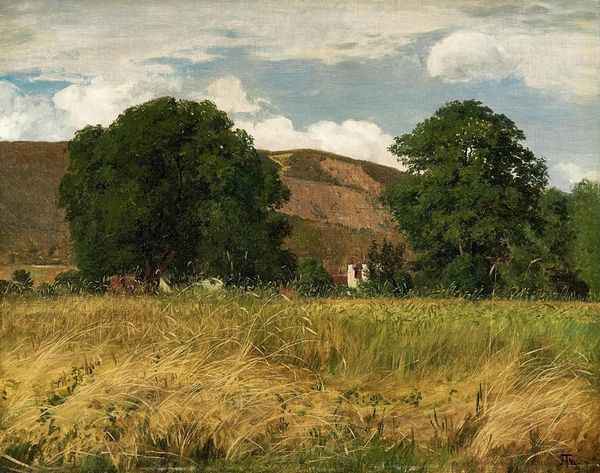
Copyright: Public Domain: Artvee
Editor: Here we have Jean-Paul Laurens's "Le Chemin De La Maloche," created in 1878 using oil paint. There's such a sense of tranquility... the figure, the dog... the light feels soft. How do you interpret this work? Curator: Considering its materiality, I see an engagement with the means of production reflecting societal values of the time. The plein-air technique itself—the act of painting outdoors—was enabled by industrial advances that made portable paint tubes possible. Does that shift how you see the work? Editor: It's interesting to think about something seemingly so "natural" relying on industry. How might this affect our perception? Curator: Think about the colors, ground pigments mixed with oil. Where did those pigments come from? The extraction processes, the global trade networks involved in sourcing materials… even a landscape painting like this embodies complex social and economic forces at work. Are those flowers growing wild or cultivated for their pigment? It is important to think about who had access to painting. Editor: So, the act of painting, the access to resources, reveals a socio-economic narrative embedded within this tranquil scene. It makes me rethink that initial sense of calm; the painting is not just a representation, but also evidence of how art production has been made. Curator: Precisely! Considering "art" in the 19th century. "high art" separated from labor? What do we value about this? Editor: It's been very enlightening. I definitely appreciate that a materialist perspective brings out hidden connections, linking the canvas to broader industrial, class and economic realities. Thank you. Curator: My pleasure. I believe considering the material circumstances is a rewarding lens.
Comments
No comments
Be the first to comment and join the conversation on the ultimate creative platform.
